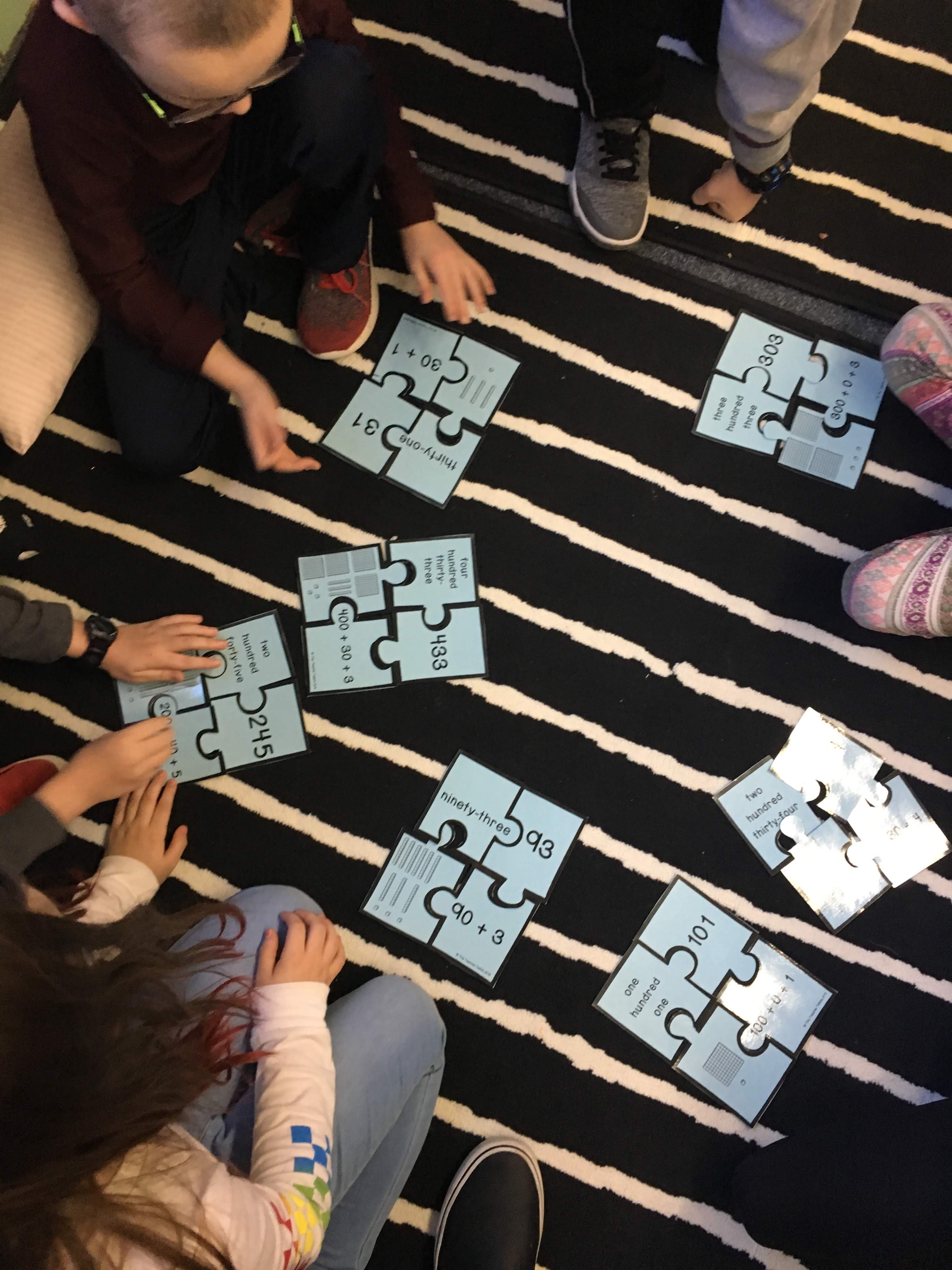
Puzzled with what to do? Puzzles may be the answer.
As a teacher, have you ever been bored with daily worksheets or wanted to make your students' learning more engaging? Are you wondering what to put in your guided math stations? Or you don't have money to purchase manipulatives for your classroom? A possible solution could be implementing puzzles! I'm not just talking about a puzzle you can buy at the store, although they are great for children to work on also, I'm talking about taking your standards and creating puzzles around the standards. By definition a puzzle is "a game, problem, or toy that tests a person's ingenuity or knowledge. In a puzzle, the solver is expected to put pieces together in a logical way, in order to arrive at the correct or fun solution of the puzzle." Why not give your students a more engaging way to show what they know using a familiar "tool" in a new way.
Take for instance primary grades students...they start to use base-10 blocks to represent numbers. After students have used the base-10 blocks and drawn them pictorially, we can start to work with numbers abstractly. The puzzles for this set of standards would have the number in standard form, pictorial form (the base-10 blocks), expanded form, and unit form. (see example below).

Puzzles don't have to be used only with math standards. I've recently had a colleague in my building say her 2nd graders are really struggling with contractions, ie: can't is can and not put together. I have blank puzzle forms on my computer so in a matter of 10 minutes I was able to put together 15 contraction puzzles. Her students now match the correct words to create the contracted word instead of trying to figure it out without the word options. This is just another way for students to show what they know.
Puzzles don't have to be used only with math standards. I've recently had a colleague in my building say her 2nd graders are really struggling with contractions, ie: can't is can and not put together. I have blank puzzle forms on my computer so in a matter of 10 minutes I was able to put together 15 contraction puzzles. Her students now match the correct words to create the contracted word instead of trying to figure it out without the word options. This is just another way for students to show what they know.



8 Mathematical Practices are in play here
Want to hold them accountable? Create an answer document to have them fill in or if you have access to tablets, students can take a picture of their completed puzzles and save to a file for the teacher to look at later.
At the end of a unit give a group of students some blank puzzle templates. Ask them to create puzzles around the content you just covered. This is a great review. It will also give you more puzzles to use in your math stations, Students will love seeing their work appear for others to use!
This idea started a few year back when my group of 4th graders really took to puzzles and number sorts. Since then I have kept creating more and more puzzles for them to do. It's been a great tool to show me what they know and a different way to keep reviewing topics we have already covered. I've created many math-content based puzzles, and recently began branching out into other content areas.

(download is below)

(download is below)
No matter your grade level, give puzzles a try to shake things up for both you and your students. Below you will find some puzzles that have already been created, as well as some blank puzzle forms for you to create your own. Come back and let us know how it goes! We would love to see pictures posted of your students in action.
Lessons Learned:
- Copy puzzles on cardstock. Use different colored cardstock for each set you want to make. This will make it easier to keep sets together.
- Laminate puzzles BEFORE you cut them out.
- Use the same puzzle format so students have to match up the content and not just the puzzles pieces.
- Create 5-10 puzzles for each topic. Put those puzzles in a baggie and have the students match the pieces for each puzzle.
- For struggling students, only use 2-3 puzzles on a topic.
- Have students work in pairs or small groups.
- To amp up the learning, when you go to check the puzzles for accuracy, don't tell them which puzzles are wrong. Just tell the group how many of the puzzles are inaccurate.
Puzzled with what to do?
Puzzles may be the answer.